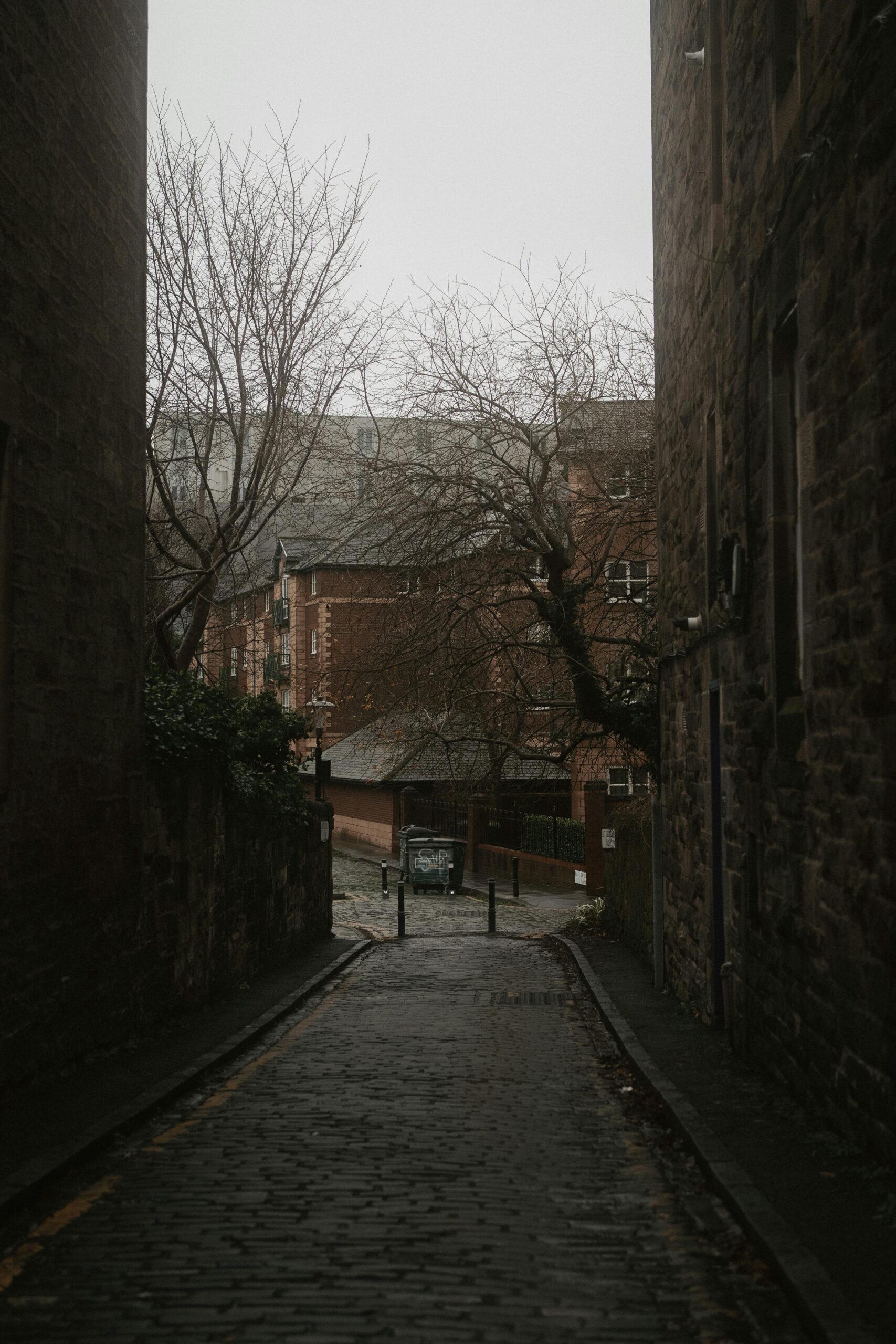Discovering the time in Edinburgh UK can be more fascinating than you might think. Have you ever wondered how the city’s rich history influences its daily rhythm? Edinburgh, known for its stunning architecture and vibrant culture, operates on British Summer Time during the warmer months, but did you know it switches back to Greenwich Mean Time in autumn? This shift can catch travellers off guard, especially those planning to explore the iconic Edinburgh Castle or attend the famous Edinburgh Festival Fringe. What makes the local time in Edinburgh so unique compared to other UK cities? The answer lies in its blend of tradition and modernity, with clocks ticking in harmony with centuries-old customs while embracing contemporary life. Whether you’re scheduling a visit to the Royal Mile or checking the best time to enjoy a Scottish whisky tasting, understanding Edinburgh’s timezone is crucial. Are you prepared to unlock the secrets of Edinburgh time zone changes and make the most of your trip? Stay tuned as we delve deeper into how daylight saving affects your plans and why knowing the precise current time in Edinburgh, Scotland can elevate your travel experience. Don’t miss out on these essential tips that every visitor should know before stepping foot in this magical city!
Unveiling Edinburgh’s Time Zone: How BST and GMT Shape Your Visit
Exploring the Quirky World of time in Edinburgh UK: An Unpredictable Journey
If you ever wonder about the time in Edinburgh UK, you probably imagine it’s just like any other city in the UK, right? Well, not really. Edinburgh’s time feels different somehow, or maybe it’s just me, but the vibe there makes the hours tick slower or faster depending on your mood and how many cups of tea you had. I’m not really sure why this matters, but it does add a bit of charm to the city’s rhythm.
Now, before we dive into the actual clock stuff, let me throw some quick facts your way in a table, because who doesn’t love a good table to break things up?
| Aspect | Detail |
|---|---|
| Standard Time Zone | GMT (Greenwich Mean Time) |
| Daylight Saving Time | BST (British Summer Time), GMT+1 |
| Typical Sunrise Times | 4:30 AM (summer), 8:30 AM (winter) |
| Typical Sunset Times | 10:00 PM (summer), 3:45 PM (winter) |
| Is Edinburgh always on time? | Ha! Hardly ever, but that’s a different story |
So, the basics is simple: Edinburgh runs on GMT in the winter and BST in the summer. But what really caught my attention was the sunrise and sunset times — bloody long summer evenings! You’d think you had all the time in the world to do stuff, yet somehow I’ve always been late for meetings when I’m there. Maybe it’s the city’s historic cobbled streets distracting you or the endless pubs that tempt you to stay longer. Anyway…
Understanding the peculiarities of time in Edinburgh UK is not just about knowing the clock but how locals and visitors interact with it. For example, did you know that the city’s famous clock on the Balmoral Hotel is actually a few minutes fast? Yeah, it’s not a mistake or a glitch — it’s deliberate, so travelers don’t miss their trains at Waverley Station. Clever, right? Or maybe just a sneaky way to keep people on their toes.
Here’s a quick listing of some unusual time-related quirks you might experience in Edinburgh:
- The Balmoral clock runs 3 minutes fast.
- Festival times can make the city feel like time loops back on itself.
- Public transport schedules can be… optimistic, to say the least.
- Local pubs often use “ish” when telling you when they close (meaning, you don’t really know).
These little things all add up to a unique experience. It’s like Edinburgh’s telling you, “Sure, I’ll tell you the time, but I’m not promising you’ll stick to it.”
Now, if you’re planning a trip and want to sync your watches or gadgets to local time, here is a little practical insight for you:
| Device/Platform | How it handles Edinburgh Time | Notes |
|---|---|---|
| Smartphones | Automatically adjusts for BST and GMT | Usually reliable unless settings are off |
| Smart Watches | Same as smartphones | Beware of battery drains affecting time |
| Old-fashioned Clocks | Need manual adjustment twice a year | Good luck remembering! |
| Public Clocks | Might be fast or slow (especially Balmoral) | Don’t trust blindly |
Honestly, trying to keep up with time in Edinburgh UK can be a bit like chasing a cat down a hallway — you think you got it, but nope, it slips away just when you thought you were on point.
Another thing that’s quite funny: the daylight saving changes sometimes catch even the locals off guard. I met a guy once who showed up an hour late to a gig because he forgot the clocks had changed. You’d think with all our tech and reminders, this wouldn’t happen, but there you are. Maybe it’s just me, but I feel like daylight saving time is one of those things designed to confuse people on purpose.
Let’s not forget the festivals. Edinburgh is famous for its Fringe Festival and Hogmanay New Year’s celebrations. During those times, the time in Edinburgh UK can feel like it’s stretched out or condensed. Streets will be buzzing from dawn till dawn, and you’ll lose track of the actual hour. Here’s an informal schedule for the Fringe Festival’s day-to-day timing to give you a sense of this madness:
| Time Period | Typical Activity |
|---|---|
| Morning (9 AM – 12 PM) | Quiet streets, set-up for shows, coffee runs |
| Afternoon (12 PM – 5 PM) | Performances start, tourists flood the Royal Mile |
| Evening (5 PM – 11 PM) |
7 Fascinating Historical Events That Influence Timekeeping in Edinburgh
Time in Edinburgh UK: A Quirky Look at the City’s Clock
When you think about the time in Edinburgh UK, what usually comes up? Maybe you imagine the famous Edinburgh Castle, or a chilly morning by the Royal Mile, but really, the actual time here is a bit more interesting than you’d expect. Not really sure why this matters, but Edinburgh’s time feels like it runs on its own little schedule sometimes. It’s not just about clocks ticking; it’s about how the city breathes, moves, and even how the people live their day.
First off, Edinburgh is in the Greenwich Mean Time (GMT) zone during the winter, and British Summer Time (BST) when daylight saving kicks in. But here’s a thing – the daylight hours change dramatically across the seasons. You’ll see sunrises at like 4:30 am in summer, which is madness if you’re a night owl. And sunsets can be as late as 10 pm in June. So, if you’re visiting or live here, understanding the daylight hours for Edinburgh UK is pretty crucial for planning your day.
| Season | Sunrise (approx.) | Sunset (approx.) |
|---|---|---|
| Winter (Dec-Feb) | 8:30 am | 3:30 pm |
| Spring (Mar-May) | 6:30 am | 8:30 pm |
| Summer (Jun-Aug) | 4:30 am | 10:00 pm |
| Autumn (Sep-Nov) | 7:00 am | 5:30 pm |
Now, maybe it’s just me, but I feel like the best time to visit Edinburgh UK is during the late spring or early autumn. The weather isn’t too mad, and the daylight is generous enough to explore without feeling rushed. You don’t want to be stuck in the freezing cold winter months unless you’re really into that sort of thing, maybe like some locals who enjoy a good bracing walk.
Edinburgh’s clocks aren’t just any clocks either; the city is dotted with historic timepieces that have their own stories. For example, the floral clock in Princes Street Gardens is not only a pretty sight but also works as a real clock. It’s been ticking since 1903, can you believe that? And every year, it gets a new design, usually themed around some event or celebration. This is one of those quirky things about the historical time in Edinburgh UK that you don’t find in other cities.
Here’s a quick listing of some notable clocks in Edinburgh:
- Floral Clock, Princes Street Gardens
- The Tolbooth Clock, High Street
- The Scott Monument Clock
- The Balmoral Hotel Clock
Funny enough, the Balmoral Hotel’s clock is famously set a few minutes fast. Legend says it’s to help travellers not to miss their trains. I guess it works, though some say it just confuses visitors more than anything else.
If you’re thinking about the actual timekeeping, Edinburgh’s public transport system is pretty punctual, not like some places I won’t name. Buses and trams try hard to stick to their schedules, but you’ll probably find yourself waiting a bit longer on a rainy day. Weather really does play a role in how the public transport time in Edinburgh UK flows, which can be frustrating if you’re in a rush.
Here’s a small table showing the average wait times for buses during different times of the day:
| Time of Day | Average Bus Wait Time |
|---|---|
| Morning Peak (7-9 am) | 5-10 minutes |
| Midday (11 am-2 pm) | 10-15 minutes |
| Evening Peak (4-7 pm) | 5-10 minutes |
| Night (9 pm onwards) | 15-20 minutes |
I suppose it’s worth noting that Edinburgh’s time zone doesn’t change year to year, unlike some places that debate daylight saving endlessly. People here either love it or hate it, but the clocks do move forward one hour in late March and back one hour in late October, which is standard for the UK.
One thing that’s kind of amusing is how locals talk about time. You might hear someone say “I’ll meet you at half past eight” or “Give me a mo” when they mean they’ll be there soon. The informal way of talking about time gives the place a friendly, down-to-earth vibe. There’s no rush, even when the time’s ticking. Maybe it’s just Scottish charm, or maybe the chill weather just makes everyone take it slow.
In terms of technology, Edinburgh embraces the modern world’s need for accuracy. The city’s clocks are often synchronised with the National Physical Laboratory’s time signals,
Why Is Edinburgh’s Clock Tower So Unique? Discover Its Timeless Secrets
Exploring the quirks of time in Edinburgh UK can be a bit of a head-scratcher, honestly. For starters, Edinburgh, being the capital of Scotland, uses Greenwich Mean Time (GMT) during winter and British Summer Time (BST) in the summer months. Not really sure why this matters, but people often get confuse about when the clocks actually change. Sometimes it feels like the city itself is stuck in a different timezone, especially when the festivals roll in.
Now, if you ever plan on visiting Edinburgh, knowing the local time in Edinburgh UK is pretty crucial. Imagine missing the famous Edinburgh Castle tour because you thought it opened at 10 but it was actually 9.30! That would be a right mess, wouldn’t it? The city’s got this vibe where time slips away quickly, mostly because there’s always something happening — from the Fringe Festival to Hogmanay celebrations.
Here’s a quick table to clear up the Edinburgh UK time zone differences throughout the year:
| Period | Time Zone | UTC Offset |
|---|---|---|
| Late October to March | Greenwich Mean Time (GMT) | UTC +0 |
| Late March to October | British Summer Time (BST) | UTC +1 |
So, during the summer, clocks move forward by an hour, which means longer evenings. But honestly, sometimes it feels like the sun never sets during those months. Maybe it’s just me, but I find the extended daylight both a blessing and a curse — more time to explore but less motivation to sleep!
Talking about time in the day-to-day life of Edinburghers, the city runs on pretty punctual schedules — trains, buses, shops, all tend to open and close at their stated times, though you might find some quirks. Like, some local shops might shut early on Sundays, which can be annoying if you’re used to 24/7 service back home.
If you want to stay updated on the current time in Edinburgh UK when you’re not there, there are multiple online clocks and apps you can use. But beware, some websites don’t update promptly and give you the wrong time. Imagine being late for a dinner because of that! Trust me, it happens more often than you think.
Now, let’s talk about something a bit more fun — the festivals and how they mess with your sense of time. Edinburgh’s famous for its Fringe Festival, which lasts for about three weeks in August. During this time, the city feels like it’s on fast-forward. The streets buzz with performances from early morning till late night. It’s like time itself bends to the will of the arts. If you’re trying to keep track of time here, good luck! You’ll probably lose track and end up watching street performers till god knows when.
Below is a small listing of key events and their usual timings in Edinburgh:
- Edinburgh Fringe Festival: Late July to Late August (Events run from 9 AM to midnight or later)
- Hogmanay (New Year’s Eve): 31st December (Street parties start in the afternoon and go well past midnight)
- Edinburgh International Festival: August (Daytime and evening performances)
One thing that’s kinda interesting is how daylight saving affects these events. For example, the Fringe Festival benefits from longer daylight hours, making it easier to run outdoor events late into the evening. But don’t expect the weather to play nice — Scotland’s weather is famously unpredictable, which can mess with your plans more than the time changes.
If you’re wondering how to keep track of time in Edinburgh without getting too stressed, here’s a simple schedule suggestion for tourists:
| Time of Day | Suggested Activity |
|---|---|
| Morning | Visit Edinburgh Castle or museums |
| Afternoon | Explore Royal Mile and shops |
| Evening | Attend festival shows or dine out |
| Night | Join Hogmanay parties (seasonal) |
Maybe it’s just me, but I always forget to check the time and end up missing the last bus back to the hotel. If you’re like that, make sure to download a local transport app or keep printed schedules handy. Time in Edinburgh can sneak up on you when you’re having fun.
Another practical insight — if you’re calling someone in Edinburgh from abroad, be aware of the time difference. The UK is generally one hour behind Central Europe during summer, but in winter it can be two hours or more, depending on where you are. It’s easy to get mixed up especially when daylight saving kicks in or out. So, double-checking the Edinburgh UK current time before ringing someone is a good habit.
Lastly, a quick note about the clocks at Edinburgh Waverley station — they’re a bit of a local icon. The main clock tower shows the correct time most of the time, but sometimes it’s a little
The Best Times to Explore Edinburgh: Seasonal Guides for Perfect City Tours
Spending time in Edinburgh UK is something that many people finds quite charming, yet sometimes confusing because of the weather and the clocks. Not really sure why this matters, but knowing the exact time in Edinburgh UK is more important than you might think, especially if you’re planning to catch a show at the Edinburgh Festival or just want to make it to that pub quiz on time.
Now, Edinburgh is in the GMT time zone, or Greenwich Mean Time, which is basically the standard time everyone else measures themselves against. But then, like most of the UK, Edinburgh switches to BST (British Summer Time) during the warmer months. This means clocks go forward an hour, but honestly, who remembers whether that’s in March or April? It’s a bit confusing, and sometimes I just hope my phone sorts it out without me needing to do anything.
Here’s a quick table that might help, if you’re one of those people who loves to plan things down to the minute:
| Period | Time Zone | UTC Offset | Notes |
|---|---|---|---|
| Late October to March | GMT (Greenwich Mean Time) | UTC+0 | Standard time, no daylight saving |
| Late March to October | BST (British Summer Time) | UTC+1 | Daylight saving time, clocks move forward |
So, if you’re checking the current time in Edinburgh UK during December, you’re looking at GMT, which means no daylight saving is applied. But, if it’s July, well, you better add one hour to your watch! It’s simple in theory, but in practise, it can be a bit of a faff if you’re not paying attention.
Another thing that people sometimes forget is that Edinburgh, like the rest of the UK, changes its clocks at 1 am GMT. This is when the clocks either spring forward or fall back depending on the season. Imagine waking up and suddenly your phone or clock says it’s an hour later or earlier, it can mess up your whole day if you’re not prepared. I once missed a train because I didn’t set my alarm properly after the clock change. Lesson learnt, never again!
If you’re planning a trip or just want to keep in sync with friends or work colleagues in Edinburgh, it might be useful to know the typical daylight hours throughout the year. Here’s a quick rundown:
- January: Daylight lasts about 7 hours
- April: Around 13 hours of daylight
- July: Nearly 17 hours of daylight (long summer evenings!)
- October: Drops back to around 10 hours
Maybe it’s just me, but I find the long summer evenings in Edinburgh absolutely brilliant. You can stroll around Arthur’s Seat or the Royal Mile well into the evening and still have plenty of light left. However, the short winter days can be a bit gloomy and sometimes make you wish for a nap by 4 pm.
For those who works remotely or coordinates with people in different time zones, knowing the exact time in Edinburgh UK becomes even more crucial. Here’s a little cheat sheet to help convert Edinburgh time to some major cities:
| City | Time Difference with Edinburgh (BST/GMT) |
|---|---|
| London | Same time (BST/GMT) |
| New York | -5 hours (EST), -4 hours (EDT) |
| Sydney | +9 hours (AEST), +10 hours (AEDT) |
| Tokyo | +8 hours (JST) |
Just remember that daylight saving dates might differ in other countries, so your math might be off by an hour depending on when you check it. I know, it’s a headache, but that’s the world we live in.
Oh, and a quick heads up for all the tech lovers out there: if you’re using a smartwatch or any digital device, it should automatically update to the correct time in Edinburgh UK. But if you’re one of those folks still rocking an old-school analogue clock or a wristwatch, you’ll probably have to do it manually twice a year. Don’t say I didn’t warn you!
Lastly, a little fun fact that doesn’t really affect the time but is worth knowing: Edinburgh has a few statues and clocks around the city that are historically important but sometimes show the wrong time. So, trusting a random street clock for the precise local time in Edinburgh UK might not be the best idea. Always double-check with your phone or another reliable source.
In summary, dealing with time in Edinburgh is not rocket science, but it does require a bit of attention, especially around the daylight saving changes. Whether you’re visiting the city, working with Edinburgh-based pals, or just curious about the time zones affecting Edinburgh UK, being aware of these quirks will save you from missing appointments or getting
How Does Daylight Saving Time Affect Edinburgh’s Local Life and Festivals?
Exploring the Quirks of Time in Edinburgh UK
When it comes to time in Edinburgh UK, it’s not just about looking at your watch or phone and calling it a day. Nah, there’s more to it than that, and honestly, I’m not really sure why this matters, but people do get quite obsessed with the whole timing thing. Like, did you know that Edinburgh operates on Greenwich Mean Time (GMT) during the winter months and switches to British Summer Time (BST) come late March? Yeah, that happens every year, without fail, or so they say. It’s like clockwork, literally.
The clocks goes forward one hour in spring and backward in autumn, which can mess with your internal clock more than you’d like admit. Maybe it’s just me, but I feel like the whole daylight saving time thing is more confusing than helpful, especially if you’re not from the UK and trying to keep up with meetings or catching trains. Speaking of which, here’s a quick table to help you get the hang of current time in Edinburgh UK depending on the time of the year:
| Period | Time Zone | UTC Offset |
|---|---|---|
| Late October to late March | Greenwich Mean Time (GMT) | UTC +0 |
| Late March to late October | British Summer Time (BST) | UTC +1 |
Now, if you’re a tourist or a new resident, you might be wondering how this whole time thing affects your daily life. Well, for starters, best time to visit Edinburgh UK might actually hinge on the time change because longer daylight hours in the summer lets you explore the city without feeling rushed. On the other hand, winter can be pretty gloomy, but hey, that’s part of Edinburgh’s charm, isn’t it? Fog, chilly winds, and all that jazz.
Time Zones and The Festivals
One of the most fascinating aspects of time in Edinburgh UK is how it syncs with the city’s famous festivals. The Edinburgh Festival Fringe, for instance, typically happens in August, when the clocks are well into BST. This means you get loads of daylight to cram in all those shows, pubs, and street performances, without feeling like you’re racing against the sun. But, if you plan on attending the Hogmanay celebrations (that’s New Year’s Eve, by the way), you’ll be back on GMT — which makes the countdown a bit more traditional, I guess.
Ever wondered why the New Year celebrations in Edinburgh feel so epic? It’s probably because the city knows how to play with time, literally and figuratively. Fireworks, music, and dancing in the cold night air all timed perfectly to welcome the new year. Not sure if that’s the magic of Edinburgh or just the people who live there being extra enthusiastic about the clock striking midnight.
Practical Tips on Handling Time Differences
For those who work or study remotely and need to keep track of Edinburgh UK time now, here’s a quick list of tips that might save you some headaches:
- Always double-check your calendar for daylight saving changes, because missing a meeting by an hour is not fun.
- Use world clock features on your phone or computer, but don’t rely on them 100% — sometimes they glitch.
- If you’re scheduling calls with people in Edinburgh, confirm the time zone explicitly (GMT or BST), especially around March and October.
- Remember that public transport and certain services might adjust schedules slightly during the time changes — best to check online beforehand.
Time in Edinburgh UK: A Quick Facts Sheet
| Fact | Detail |
|---|---|
| Time Zone(s) | GMT (winter), BST (summer) |
| Daylight Saving Time Starts | Last Sunday in March |
| Daylight Saving Time Ends | Last Sunday in October |
| Time Difference from UTC | UTC+0 (winter), UTC+1 (summer) |
| Time Format Used | 24-hour clock commonly, but 12-hour also used informally |
| Typical Workday Hours | 9:00 AM – 5:00 PM |
Not sure why you’d wanna know all this, but if you’re planning a trip or setting up a meeting, it’s better to be safe than sorry. Time can be slippery, especially here.
The Oddities of Edinburgh Time
Here’s something funny: sometimes, people in Edinburgh joke about how time seems to move slower when you’re stuck in a queue for a coffee or faster when you’re enjoying a walk up Arthur’s Seat. It’s like the city has its own rhythm, totally ignoring your watch. Maybe that’s why locals always say, “just take your time” — which is easier said than done, especially if you’re late to something.
Also, not everyone in Edinburgh trusts their phone clocks
Conclusion
In conclusion, understanding the local time in Edinburgh is essential for making the most of your visit or coordinating with friends, family, or colleagues in the city. Edinburgh operates on Greenwich Mean Time (GMT) during the winter months and switches to British Summer Time (BST) in the summer, providing longer daylight hours for exploring its rich history and vibrant culture. Being aware of these time changes can help you plan your itinerary effectively, whether you’re aiming to catch the sunset over Arthur’s Seat or attend one of the city’s renowned festivals. Additionally, considering Edinburgh’s time zone is crucial for international communication and travel arrangements. As you prepare for your trip or daily activities, keep the local time in mind to fully experience all that this beautiful Scottish capital has to offer. Don’t forget to adjust your clocks accordingly and embrace the unique rhythm of life in Edinburgh.













